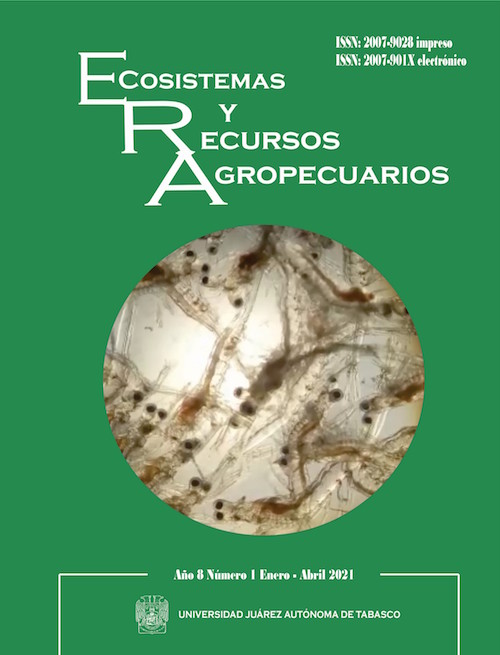Evaluación del periodo de masculinización en la tilapia del Nilo var spring empleando 17α-metiltestosterona
Periodo de hormonado en tilapia.
DOI:
https://doi.org/10.19136/era.a8n1.2739Resumen
Una alternativa para reducir el uso de hormonas con aplicación inmediata en el cultivo comercial de la tilapia del Nilo, es la evaluación precisa de los tiempos de masculinización en variedades domesticadas. El objetivo del trabajo fue evaluar el porcentaje de masculinización y el crecimiento obtenido en la tilapia del Nilo alimentada con alimento comercial adicionado con 17α- metiltestosterona a diferentes tiempos. Para ello se evaluaron cinco tiempos (0, 10, 15, 20 y 25 días) de administración de hormona a una población mixta de tilapia del Nilo variedad Spring. Para cada tratamiento se utilizaron tres réplicas. Los alevines fueron sembrados a densidad de 0.5 alevines L−1 en un sistema de recirculación cerrado. El cultivo consistió de 30 días en acuarios de acrílico de 85 L y 20 días en tanques exteriores de 1000 L. La determinación del sexo se realizó con la técnica de squash. El crecimiento se determinó por medio del peso húmedo y la longitud total obtenida de las biometrías. Los resultados indican una masculinización del 100% desde los 10 días de aplicación del esteroide, pero los mayores valores de crecimiento se observaron en los grupos que recibieron el esteroide por mayor tiempo. Los resultados muestran que no es necesario administrar el esteroide durante 30 días para lograr una masculinización del 100% en variedades domesticadas y que el esteroide tiene efecto positivo en la tasa de crecimiento de los alevínes, persistiendo por algunas semanas después de terminado el tratamiento.
Descargas
Descargas
Publicado
Número
Sección
Licencia
Derechos de autor 2021 Ecosistemas y Recursos Agropecuarios

Esta obra está bajo una licencia internacional Creative Commons Atribución-NoComercial-CompartirIgual 4.0.
1. Política propuesta para revistas de acceso abierto
Los autores/as que publiquen en esta revista aceptan las siguientes condiciones:
1. Los autores/as conservan los derechos de autor y ceden a la revista el derecho de la primera publicación, con el trabajo registrado con la Licencia CC BY-NC-ND 4.0 Creative Commons Attribution-NonCommercial-NoDerivatives 4.0 Internacional de Creative Commons, que permite a terceros utilizar lo publicado siempre que mencionen la autoría del trabajo y a la primera publicación en esta revista.
2. Los autores/as pueden realizar otros acuerdos contractuales independientes y adicionales para la distribución no exclusiva de la versión del artículo publicado en esta revista (p. ej., incluirlo en un repositorio institucional o publicarlo en un libro) siempre que indiquen claramente que el trabajo se publicó por primera vez en esta revista.
3. Se permite y recomienda a los autores/as a publicar su trabajo en Internet (por ejemplo en páginas institucionales o personales) antes y durante el proceso de revisión y publicación, ya que puede conducir a intercambios productivos y a una mayor y más rápida difusión del trabajo publicado (vea The Effect of Open Access).
![]()
This work is licensed under CC BY-NC-ND 4.0


